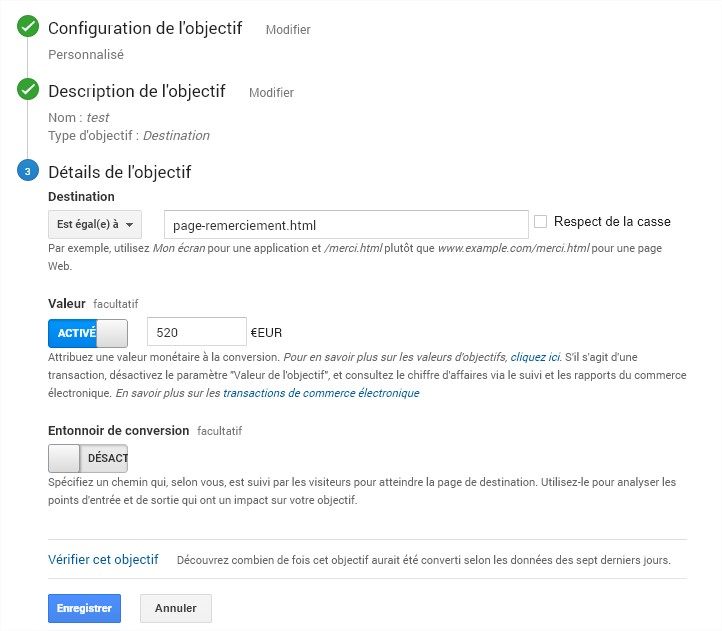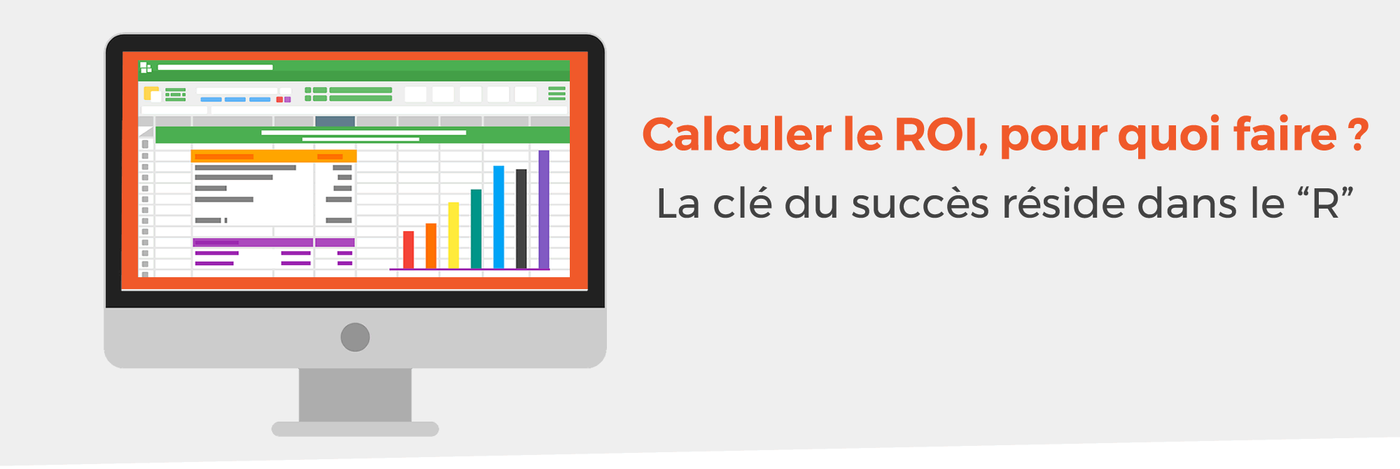Marketing director, SEO project manager, have you ever been asked to justify content campaign budgets? Have you wondered what the best method to do this is? As an agency leader, I've found myself in this situation many times... Using a concrete example, I propose to discover how and why to calculate the ROI of content marketing! Spoiler: few companies and agencies use it, but the key to securing a project lies in the "R"...
💥 The importance of ROI in content marketing
Content marketing is increasingly embedded in companies of all sizes, whether in B2B or B2C. It is natural that the leaders or marketing directors of these companies are vigilant about the budgets and expenses related to content marketing.
If you are an SEO, SEO project manager or marketing director, you will be asked to justify all this content creation intended for the company blog or any other communication channel. The best way to do this is therefore to calculate the ROI of content marketing.
It is important to note here that when I say ROI, it is an abbreviation for "return on investment". And its mathematical calculation is not a point of debate! It's a simple formula, in the same way converting miles to meters is a formula.
Now, you may be unable - or unwilling, or even afraid - to calculate your actual return on investment for a particular web content writing action. In this case, you can choose to use another "measure of success" or key performance indicator instead.
However, if you do not calculate the ROI of your content strategy, you will not be able to properly manage the budgets of your content campaigns and strategically place the pieces on the acquisition channel chessboard.
📈 ROI in content marketing
First of all, know that you must measure the ROI of content marketing at the level of:
- the action (blog post, videos, podcast, webinar, etc.);
- the campaign (on a given event: end of year celebrations, Valentine's Day, etc.);
- the annual program.
Once you calculate the return on investment of your specific campaigns, you can group all this data to determine the overall ROI of content marketing across the company.
To measure the return on investment, you need to know as much detail as possible about the "R" (return) and the "I" (investment) of your content action.
Let's say you work for a commercial bedding company that sells pillows to national franchises. It's a very targeted B2B company with moderate competition and a bit of seasonality.
As a content marketing specialist, you know you need to raise awareness and educate your audience. Moreover, you also need to use content to generate leads. These potential customers will then exchange their personal information for access to the content.
You decide to use blog post creation as an SEO traffic generator, and an e-book as "bait" for data collection.
The blog is called "Ferme-loeil.com". It is a bi-monthly publication blog shared on social networks (like LinkedIn, Twitter). Each post interviews one of the country's main franchisees (your prospects and potential customers) or highlights a problem they encounter (customer need).
In each post, the web copywriter promotes the company's e-book, downloadable from a landing page in exchange for an email address.
The question you need to answer is whether it's worth it and here's how. To do this, you will need to calculate the ROI of the content marketing implemented on this specific action.
👨🏫 The ROI formula in content marketing
Generally, your client (or boss) will ask you for a budget for the year (investment). But to secure the project or activate the campaign, you should provide him with the estimate of the return on his investment.
Calculating the "I" (investment)
As an SEO project manager or marketing director, between keyword research and briefing the copywriter, you spend 3 hours per post. Your hourly cost is let's say €100/hour. Add to this a factor for charges of 50% which cover office space, equipment, health insurance, etc. Thus, it costs your company €900 per month for you: three hours per post x two posts x €150/hour.
Your content writers also invest about 12 hours per post, or 24 hours/month and an additional 2 hours per month on the Ferme-loeil.com newsletter to which customers and prospects can subscribe. His remuneration rate as a freelancer is €45 per hour, so his monthly cost is €1,170.
You are assisted by an SEO consultant, for the proofreading part, SEO optimization of the content and publication of the content on the blog. In addition, he will take care of promoting the article on social networks and link building. The hourly rate is €50/hour (add 50% for various charges or €75/h). The consultant spends about 5 hours per article to perform the tasks ("yes, yes, only 5 h because he uses SEOQuantum to optimize his content" Promo minute 😊). His monthly package is therefore €750.
In addition to labor, you spend about €500 on ads on social networks or on link buying platforms (like SEMJuice or Soumettre.fr) per post (or €1,000 per month).
You also spent €6,000 on writing the white paper, and you think it will be relevant for a year. You can thus spread these costs over 12 months as well (or €500 per month).
So, your monthly investment for content marketing is €4,320:

Calculating the "R" (return)

The company's sales team is efficient, and their conversion rate from leads to a sale is 2.5% (for the e-book downloaded by the visitor).
In addition, 2% of newsletter subscribers become customers in the long run. (Make sure not to count new customers who download the e-book and receive the newsletter twice!)
Each month, the blog is responsible for 5 new customers. (Three from the e-book via 200 downloads x conversion rate of 2%, and two from the email via 200 subscribers x conversion rate of 1%)
The average customer spends €20,000 during their relationship with the company, and the average profit margin is 15%. This means that each customer is worth €3,000 to the company (€20,000 x 15%).
For better tracking, you can directly configure this value in the Google Analytics goals. Go to Administration > Goals > Choose a goal > Goal details, fill in the [VALUE] field, by the value of generating a lead.

With all this data, you can then calculate the return (R) of your content marketing actions. Thus, you establish that the blog brings in an average of €15,000 per month in net revenue to the company.
The next step is to calculate the actual return on investment. The ROI equation is ALWAYS the same: yield minus investment, divided by investment, expressed as a percentage: (R-I)/Ix100.
In this example, it would be €15k minus €4,320 divided by €4,320 (€15,000-€4,320/€4,320 = 2.47). So the return on investment for this blog is 247%. Of course, an ROI equal to 0% means that your investment is equal to your return.
🤔 How to calculate the ROI of content marketing in B2C?
Calculations of the ROI of content marketing are easier for B2B companies, as they almost always have visibility on transactions. The B2B company knows when someone buys, because there is a CRM, invoices, and a salesperson. The exact figure for the return on investment is therefore very precise.
B2C companies often need more details to calculate the return on investment, as they have less visibility between blog readers, brand awareness, and buyers. If the above example was for a consumer-focused bedding brand, the investment part would be similar, and the formula itself does not change. The challenge, however, is to define the return.
We know that some customers read the blog, but we don't know what impact this has on purchases. How to do it? In my opinion, the best way to get this data and to find a relevant panel for a precise return is by conducting a survey. The company could survey 2,000 customers each month and ask them two questions, for example:
- How much did you spend on bedding with us last year?
- Do you follow the blog?
If you get the results of this survey and if you have a statistically valid sample of your customers, you can generate an analysis for the "return" part. You thus determine the percentage of all customers who read the blog and the annual number of additional customers who are generated.
💰 Observe the ROI of your channels and spend!
Generally, wait between 3 and 6 months, depending on the industry, to get good ROIs. Once you have determined the return on investment for each content creation action, you can think STRATEGY!
- Where and how do you want to spend your content marketing resources?
- Do blog contents outperform your YouTube channel?
- What would happen if you spent more money on content promotion?
- How would this impact the return on investment?
Moreover, the details provided in the blog example can be transposed to all communication channels. Have you tried other acquisition channels like marketing automation, Instagram? You can calculate the ROIs in the same way!
If you have all the data available, calculating the ROI in content marketing is not complicated. This is nevertheless the case for B2B companies! Indeed, if you set up your Google Analytics correctly to retrieve the key figures, you can know your return on investment precisely!
In B2C, consider surveying your customers to get reliable statistics of your commercial performances. However, regardless of the orientation of your business, the investment is easy to measure. Of course, you need to have well-organized accounting...
I do have one question though... If you had never calculated the ROI of your actions, what indicators were you using to justify content creation?
Need to go further?
If you need to delve deeper into the topic, the editorial team recommends the following 5 contents:
- The Content Calendar: An Effective SEO Content Strategy
- SEO Content Pillar: The Backbone of Keyword Clustering
- Is the Future of SEO in Keyword Clustering?
- SEO and Content Marketing: 5 Steps of the Ultimate Guide to Creating High-Performing Content + Free Template
- Semantics and Conversion Rate: How to Convert Your Leads?

